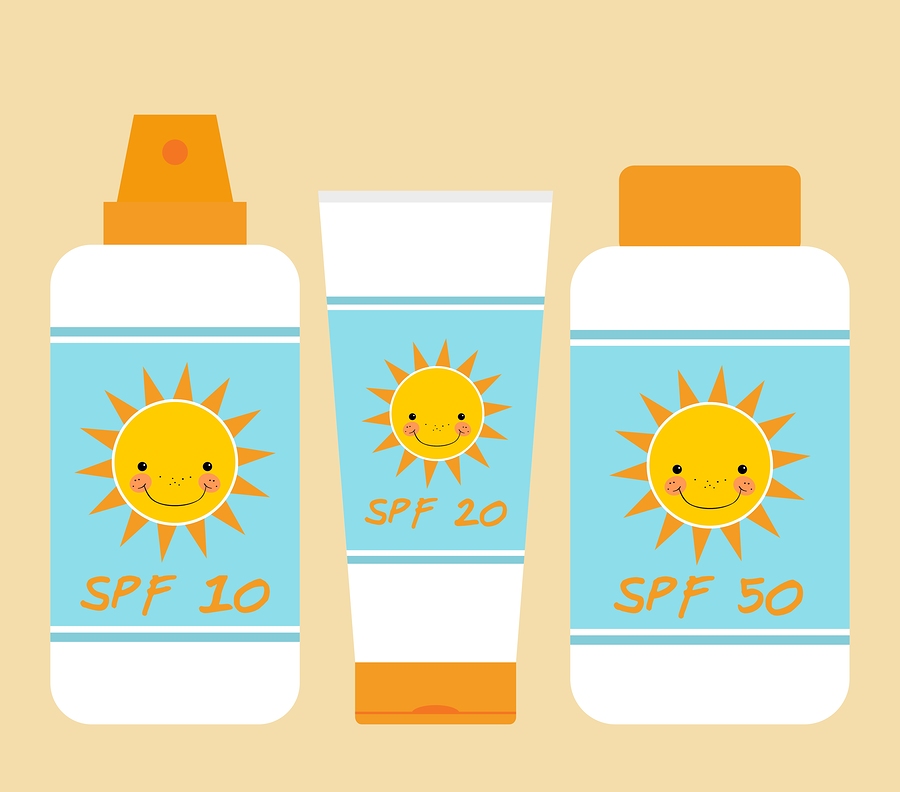Hello everyone! Yay for nicer weather – finally!
This blog is going to be a two-parter – this week I’m going to offer you healthy eating tips and with my next blog I’ll follow-up with tips to stay fit and active. Combine these two subjects and you’ll be well on your way to encouraging your kids (and yourself) to live a healthy lifestyle.
Eating well and staying fit is a family affair. It is something the entire household should be a part of. Here are my healthy eating tips for your family:
Re-vamp the way you grocery shop
- Make sure you make a healthy shopping list and stick to it. Only allow yourself one to two “extras” that weren’t on the list to avoid buying unhealthy, but good looking, items. If you don’t have the willpower to do that, try online grocery shopping. Oh and don’t go shopping when you are hungry! That’s when the cookie
 aisle is the most enticing.
aisle is the most enticing. - Skip certain aisles all together; the snack/chip/cookie aisle, the baking aisle, sometimes even the cereal aisle. If you need something in these aisles look specifically for those items then turn that cart around and get out! My husband and I love Oreos. We rarely even go down the aisle that they are sold in so we aren’t even tempted.
- Look at labels. I admit, they aren’t the easiest things to read, but, if you take a second to compare two items you might be surprised with what you learn. Just because something is marked at “low fat” or “low sugar” doesn’t mean it is the healthiest option. Look at calories (the lower per serving the better), fat (trans fats are bad!), fiber (more fiber makes you more full), and protein (lots of protein will keep you full longer) to get a well-rounded grocery item.
- Spend time in the fresh section. Even though fruits and veggies can be expensive, if you spend some time, you can find items on sale that will feed your family well.
- Pick whole grains. Make sure to do this for your bread items and whatever other options offer it.
Watch what your kids drink
- Drink more water. Four to eight cups a day for school-aged kids is a great range to shoot for. You can start giving your baby/toddler water after six months of age in a sippy cup or a cup with a straw.
- Milk is a healthy alternative to water for kids. From one to two years of age, kids should be on whole milk to get the necessary fat needed for brain development. After two years of age, fat free milk is a healthy way to get them their dairy without the extra fat.
- Get rid of pop and juice. They should only be given on special occasions and in small quantities. They are loaded with sugar and have little to no nutritional benefit (yes, even the ”all-natural fruit juices”).
- Cut out caffeine. Caffeine is dehydrating and can make you crave more of that sugary drink it is coming from. Plus, rarely do you need to give your kids more energy than they already have!
Get creative in the kitchen
- Eat at home and skip the restaurants. Eating out is hard on your wallet and on your waistline. Buying groceries and cooking at home will always be the cheaper and healthier option – and great for family bonding.
- Be sneaky with vegetables. It is hard to get a picky toddler or school age child to eat all their veggies – this is a fact! So try to “sneak” things in meals in a way your child might not even notice. You can puree in cauliflower with mashed potatoes or mix it in with macaroni and cheese dishes. Chop up carrots and acorn/butternut squash together – put a teaspoon of brown sugar on top to sweeten the dish and your kids will be gobbling it up before you know it.
- Be realistic with what you want your kids to eat. Children’s taste buds are different than adults. I remember as a kid I did not like brussel sprouts (I thought they tasted like feet!) but now I love them. Offer your kids a variety of veggies and see what works – they might not have liked something in January but now in May they don’t mind it. Don’t expect them to eat huge amounts either. Sometimes just a couple spoonfuls are a victory.

- Make sure your kids know that they have to at least try their veggie (and other food items offered) before refusing them outright. If they try a bite and don’t like them, then have a back up veggie ready (kids tend to like carrots, corn and green beans – try to have those around all the time). Other than having a second veggie on hand, your child should eat what is offered to them at meal time and try not to become a short-order chef with whatever their demands at meal/snack time are.
- Snack healthy. For example, celery with light ranch dressing or a small bit of peanut butter can make for a wonderful healthy mid-day snack. Chopped up apples are always a kid favorite and grapes are another filling fruit option. Yogurt, string cheese or sliced cheeses are other good options too.
- Easy on the toppings. Sometimes kids will like a veggie because it is loaded with butter, dressing or ketchup. It is fine to spice things up to get kids to like something initially, but, make sure you aren’t taking away all the nutritional value by overloading their veggies with toppings.
- Have a well-balanced plate at each meal. Veggies and/or fruits should take up at least half your plate, grains/carbs (like potatoes, rice, bread) should take up about a fourth of your plate and your protein (usually a meat or fish item – or maybe beans for our vegetarians out there) should take up the remaining fourth of a plate. Visit www.choosemyplate.gov for great online resources regarding healthy balanced food options.
- Make dessert healthy – but still fun. Forget the chocolate cake and cookies, instead buy some mixed berries (frozen or fresh) and mix with light cool whip – tada! You have a healthy sweet dessert light on calories and high in nutrients. Or, try low-fat yogurt with some honey or a fourth cup of granola – sweet, crunchy and healthy! Remember, mom and dad, these desserts are for you too!

- Use free recipe websites/hand-outs. I personally love allrecipes.com for ways to find how to creatively use a certain ingredient.
Watch your portions
- Visit http://www.webmd.com/diet/healthtool-portion-size-plate for easy to use portion guides to make sure you and your family are getting the right amount of food.
- Make sure to look at serving sizes. Many times a food will boast “100 calories only” but you can only have a half a cup of that item to reach that caloric amount. Make sure to glance at the serving size before you decide if that food is really as good as it is claiming.
Sweets are treats
- Cookies, cakes and candy should only be offered on special occasions. Having them as an option for a daily dessert or snacks during the day can lead to bad habits.
- Don’t give in to a child who demands sweet treats. Hunger strikes at meal times can be frustrating, but, giving in by letting your child have a sweet treat is no way to teach healthy habits. They will soon only eat sweets and it will get harder and harder to get them to eat healthily. Stick to your guns!
Now, try not to be overwhelmed – make small changes at first and keep at them. If your child is overweight, they should be seen by their pediatrician several times during the year to monitor their weight closely.
If you would like more resources, check out http://www.rushcopley.com/services/healthy-weight/. It is a great website designed to help you and your family find ways to eat healthy.
One last thing! Now that farmer’s market season is here, make sure to check out your local vendors. Here are a couple options:
Oswego, Plainfield, Naperville: www.kellersfarmstand.com
Aurora: http://theaurorafarmersmarket.com/
Please let me know if you have any questions or want more info – I’m happy to offer more suggestions or clarify my tips as needed.







